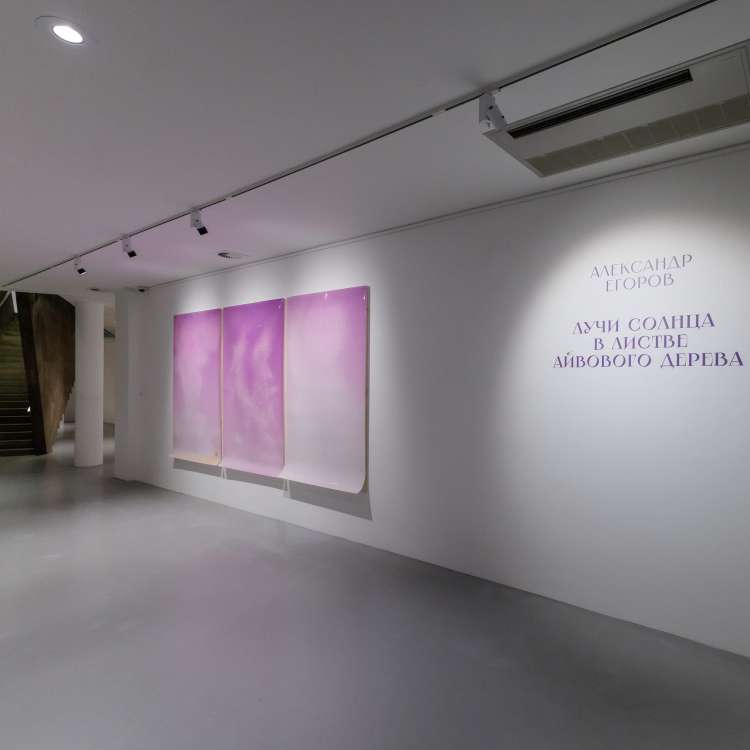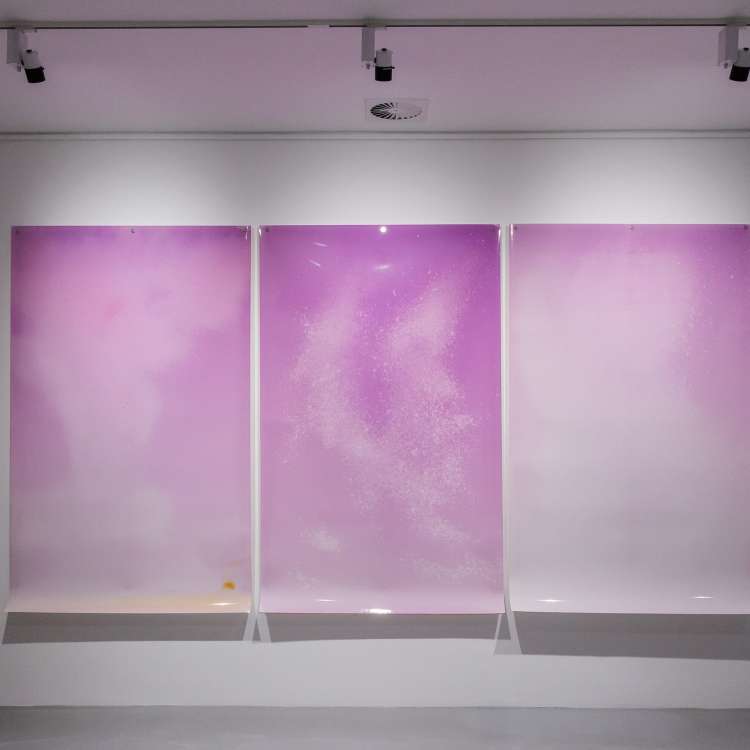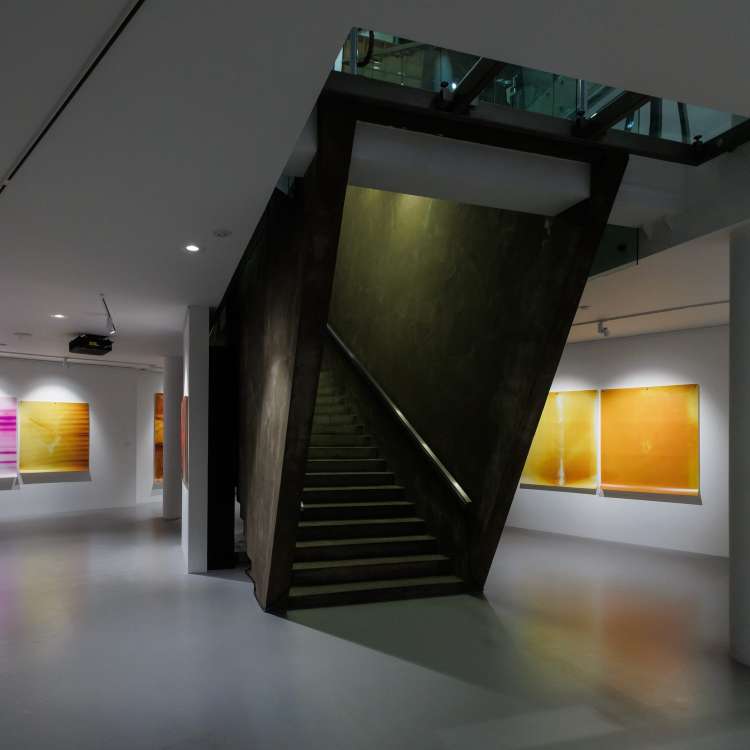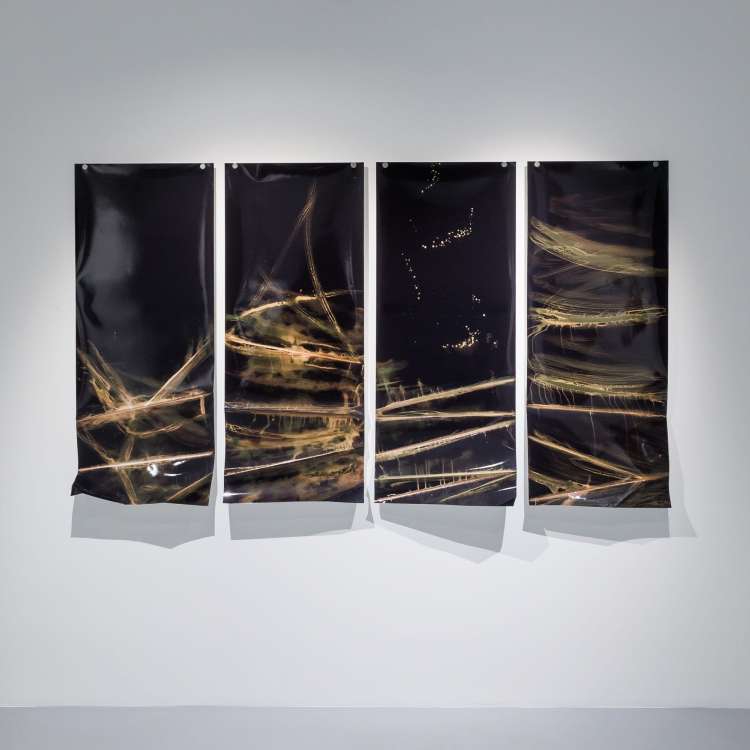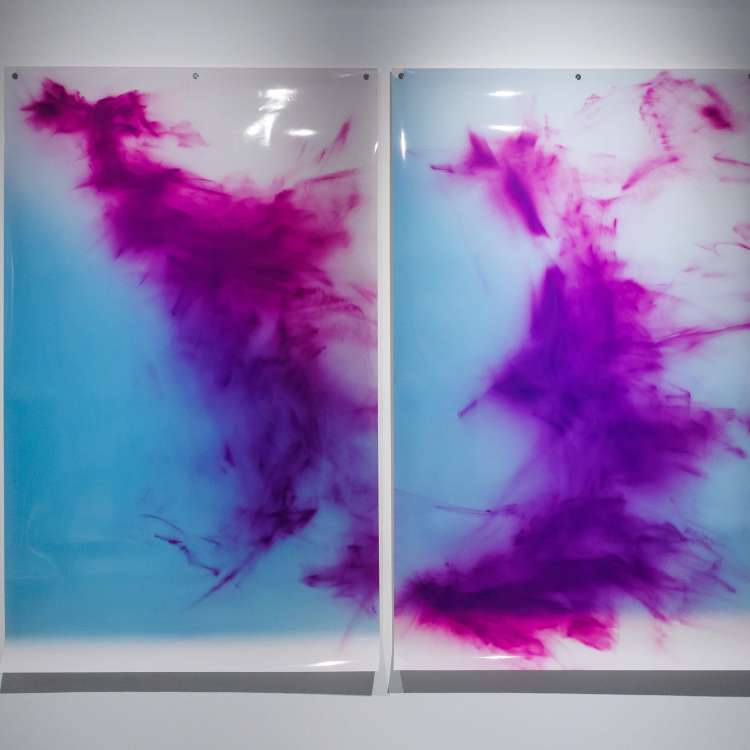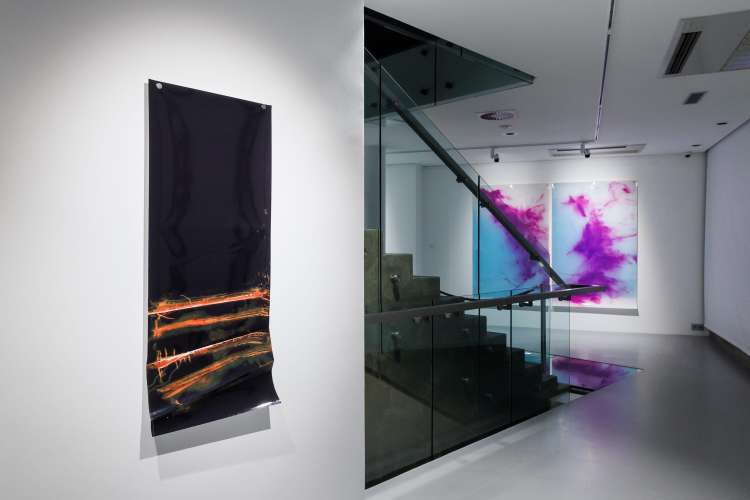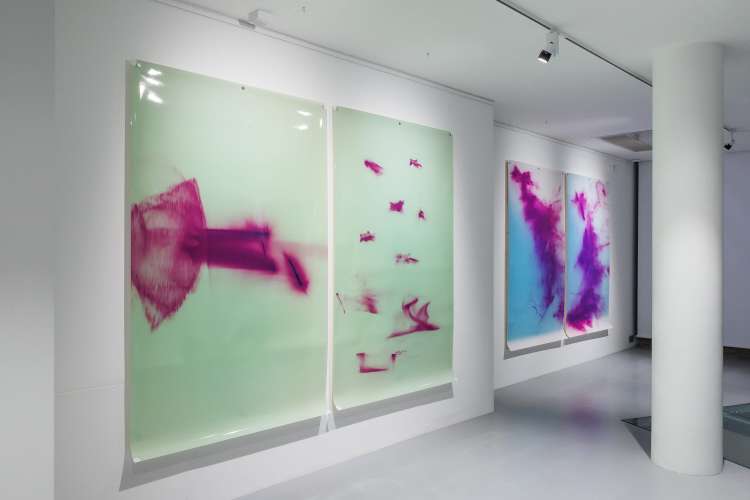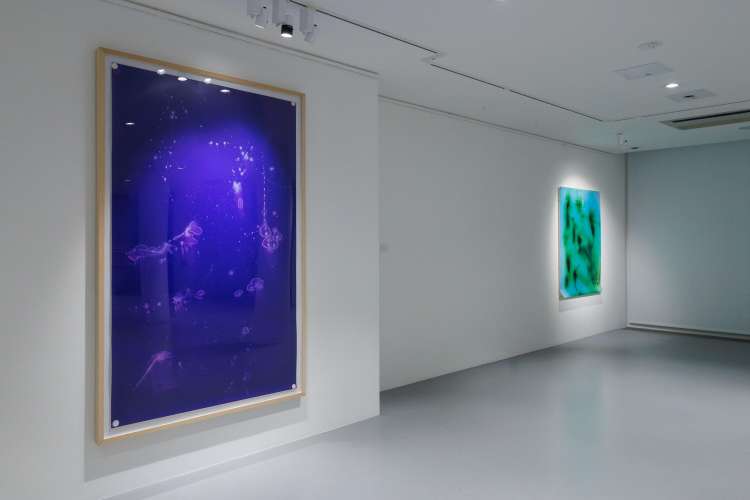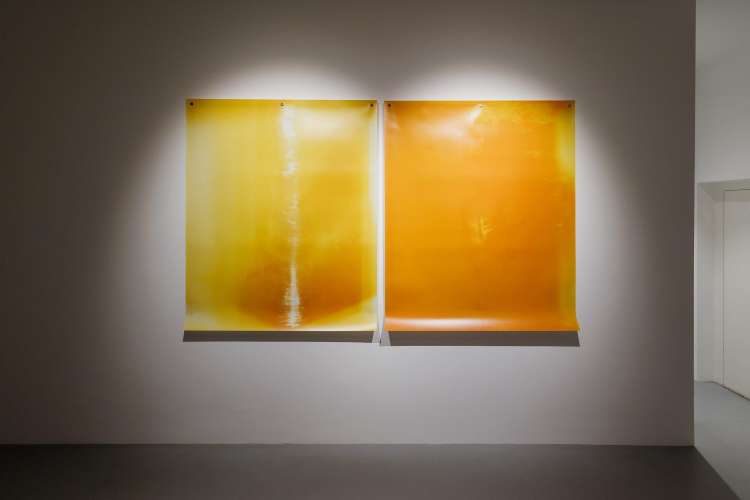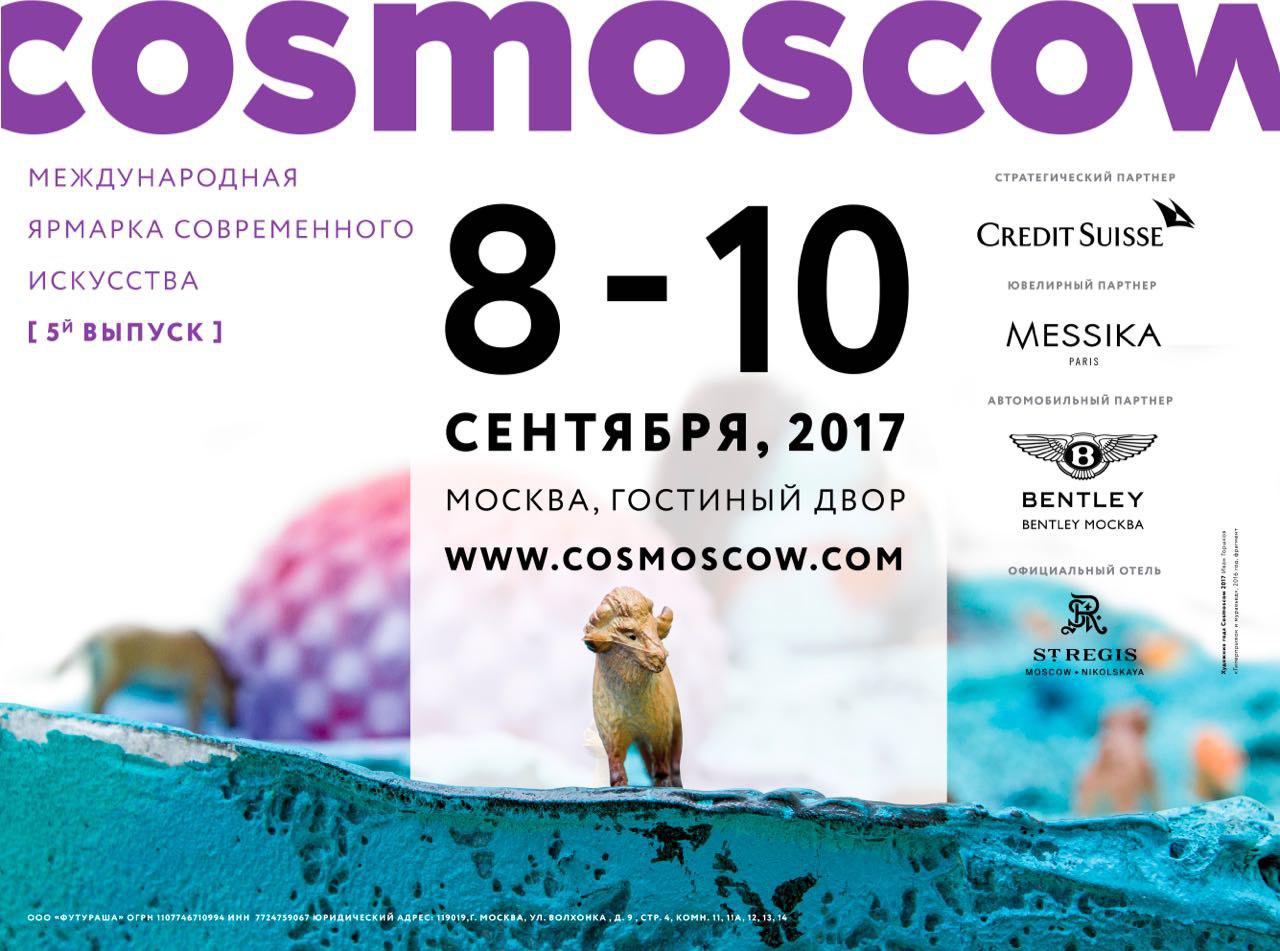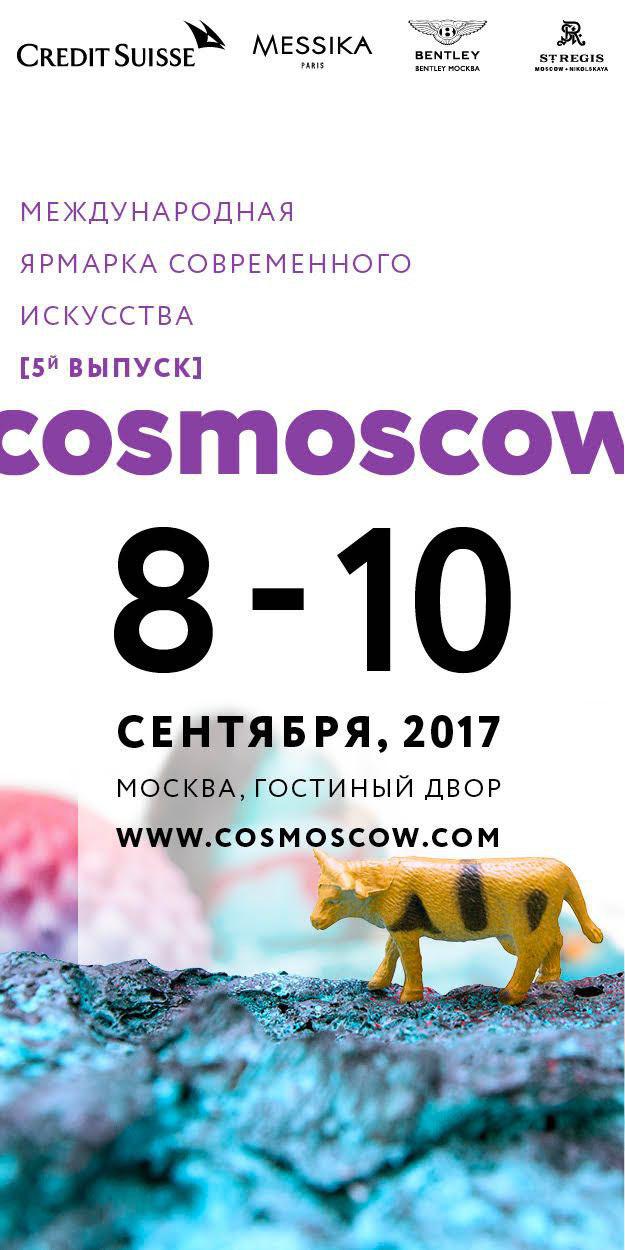This exhibition is the result of Alexander’s work in the Collab programme established by the V-A-C Foundation and the Vaults Art Production Centre at the GES-2 House of Culture. Experimenting with the properties of photographic paper, the artist has created several dozen abstract photograms. They are made without the participation of a camera, being directly created by a beam of light. In this case the author cannot fully control the process. In fact unpredictability and spontaneity comprise the basis of the expressive method and reveal the importance of the actual process of image production. Egorov uses various objects or light sources – for example, a laser pointer and crystal glasses through which rays of light are refracted, while simultaneously choosing a coloristic resolution. Only an approximate prediction of how the photo emulsion will react to a particular light flux coloured with filters is possible. According to Egorov, his technique resembles the traditional Japanese Raku ceramics method of glazing, when it is not entirely clear what the final result will be before the firing.
Alexander Egorov’s technique fits into an already established artistic tradition, when the author partly delegates his work to the material itself, or even to a special emotional state. In this way the acclaimed American artist Jackson Pollock painted his works using the so-called ‘drip technique’, by which he splashed paint directly onto the canvas, falling into a kind of trance reminiscent of the Native American shamans. Aesthetically and compositionally the project calls to mind the quest of contemporary German photographers like Wolfgang Tillmans, who explore distortions and abstract associations of the relationship between sleep and the unconscious, the basic principles of the photographic medium.
The title of this exhibition refers to the film of the same name by the eminent Spanish director Victor Erice, which tells about the everyday life of a lonely artist who paints a quince tree in his garden, day after day. The director focuses on the interaction between his hero and the tree, which he depicts at different times of day and under different weather conditions. Each time the tree looks different, indicating the elastic essence of things when they become an object of visual perception – the Impressionists drew attention to this when they launched a revolution in Western European art in the 19th century. Erice shows that light is the ontological basis of any image, and essentially the co-author of any artist. The same is true for the works of Alexander Egorov: although regulated by the author, the flux of light retains independence, revealing new expressive horizons for the artist.
Russian artist working with photography. In his practice Egorov combines photography and digital technologies, using the deconstruction technique. Alexander Egorov’s art is devoted to information saturation and overconsumption, the aesthetics of imperfection and the modelling of neo-reality. Born in 1987 in Moscow. In 2010 he graduated from the Ivan Fyodorov University of Printing Arts in Moscow, then in 2012 from the Moscow British Higher School of Design (Faculty of Photography). From 2019 to 2020 he took the New Artistic Strategies course at the Joseph Backstein Institute of Contemporary Art. In 2012 Alexander Egorov won The Best of Russia award with his ‘Sandman’ project. The Ruarts Gallery has hosted three solo exhibitions by the photographer: "Alexander Egorov" in 2013, "Stickers" in 2017, and "Trading" in 2021. The artist’s works are included in the permanent collection of the Kiyosato Museum of Photographic Arts (KMoPA, Japan), where they participated in the Young Portfolio Acquisitions project in 2018 and 2021. In 2021, Alexander Egorov was one of the seven Russian authors who took part in the international project "Lady Dior As Seen By" in the Ruarts Foundation. His work "Lady in the Jungle" was included into the House of Dior collection. In 2022, he took part in the Collab program of the V-A-C Contemporary Art Foundation. Currently the author is actively experimenting with analogue photography, exploring and expanding the potential of photographic art.

